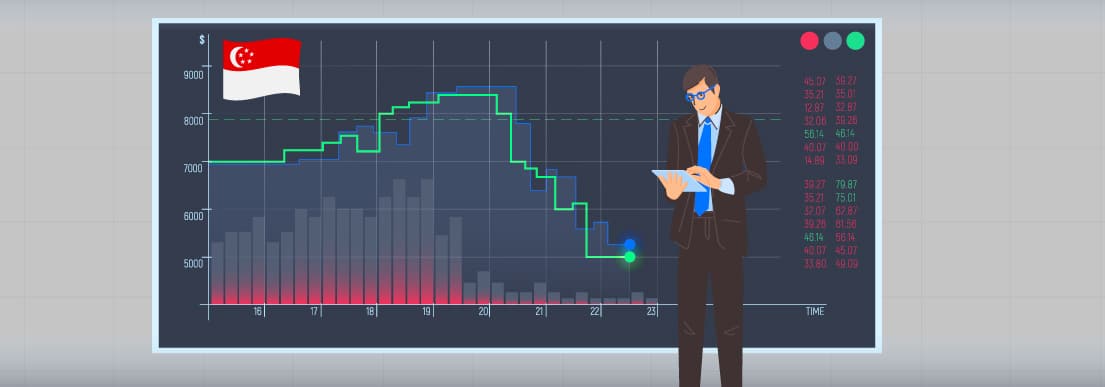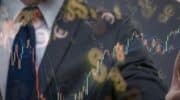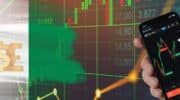- Home
- Forex News
- Forex trading made easy: a beginner’s guide for Singapore traders
Forex trading made easy: a beginner’s guide for Singapore traders

Forex or foreign exchange trading involves buying and selling foreign currencies in the financial market. It is the world’s largest market, with $6 trillion traded daily. Traders buy a foreign currency to sell another, known as the exchange rate, which constantly fluctuates depending on the demand and supply of the currencies.
The main objective behind trading foreign currencies is to earn profits in the long run. However, it must be noted that while traders earn massive returns from forex trading, it is also associated with different types of risks, including leverage risk, market risk, currency risk, and liquidity risk, which can bring heavy losses, especially for novice traders.
Forex trading is a complex process and extremely volatile. This volatility makes the foreign exchange market attractive, bringing higher profits and increasing the risk level.
In this beginner’s guide, we will delve deeper into how forex trading works, understand the basics like fundamental and technical analysis, and how develop a profitable forex trading strategy for novice traders.
Getting Started with Forex Trading
Forex trading is similar to trading stocks and bonds. Even though it is not a complicated process, trading foreign currencies require specialized skills and knowledge. Traders need to create a brokerage account to get started with currency trading. Choose a Singapore forex broker that offers micro-trading accounts with low capital requirements.
These accounts offer variable limits that allow brokers to trade with capital amounts as low as $10. Many Singapore forex brokers also offer demo trading, which allows traders to familiarize themselves with the platform’s features and functions before dealing with real money forex trading. These accounts also help them become more comfortable and determine their trading styles.
Understanding Forex Trading Basics
Traders must learn the language of forex trading to understand how the market works. The most important terminology associated with forex trading includes exchange rate or currency pair assigned a three-letter code (for example, USD for US dollars). Forex trading is expressed in terms of the exchange rate, also known as currency pairs like USD/EUR, USD/JPY, AUD/USD, and more. The currency pairs indicate the current exchange rate for the two currencies involved. For instance, the currency pair USD/EUR has two currencies – USD as the base currency and EUR as the quote currency. The currency pair or exchange rate simply represents how many quote currencies are required to buy one unit of the base currency. When the exchange rate increases, the base currency (USD) increases in value compared to the quote currency (EUR). On the other hand, if the exchange rate falls, the value of the base currency falls.
Next is the bid-ask spread, an important term used in forex trading. Similar to other forms of financial trading, like stocks and bonds, exchange rates are also determined by the maximum price that the buyers are willing to pay for a particular currency (known as the bid price) and the minimum amount that the sellers are willing to sell at (known as the asking price). The difference between the two amounts is called the bid-ask spread. This is the value at which the trades ultimately get executed.
Traders must also have a basic understanding of market orders and limit orders. Market orders refer to transactions executed instantly at the current market price, whereas limit orders are executed at a set maximum or minimum price level at which the traders are willing to buy or sell. Market orders provide a higher likelihood that a trade order will go through. However, there is no guarantee that the order will be executed since it is subject to availability. On the other hand, limit orders may not be executed at all if the set price of a limit order is not met. In that case, the limit order expires depending on the expiration date specified.
Fundamental Analysis
Fundamental analysis is used to evaluate the forex market using economic indicators and other data sources to find the fair value of a currency pair. It provides an excellent way of familiarizing with chosen currency pairs to find profitable opportunities. It often involves poring over news headlines and economic data reports to analyze economic, political, and social forces that can potentially affect currency prices. Using demand and supply as indicators of price movements, fundamental traders can analyze different factors that affect market demand and supply.
Since economic indicators paint the picture of a country’s economic health, changes in market conditions directly affect currency prices and trade volumes in the country. It is important to note that, however, macroeconomic indicators are not the only factors affecting currency prices. Technical factors and third-party reports, among other things, can also substantially affect the valuation of currency pairs.
For instance, economic reports released indicate to the forex market whether a country has improved or deteriorated. The effects of these reports are comparable and can determine how they can affect the currency pairs. A deviation from the normal scenario can lead to large trade volumes and price movements in forex.
Technical Analysis
Technical analysis in forex trading evaluates trades and investments to identify the most profitable opportunities by analyzing statistical trends, chart types and timeframes, trend lines, support or assistance levels, and other technical indicators. Unlike fundamental analysis, which evaluates the currency’s value based on economic indicators, technical analysis focuses on price movements and trade volumes.
Technical analysts can forecast the price movements of any currency pair subject to demand and supply forces in the market. In general, technical analysts use a long list of indicators such as price trends, volume and momentum indicators, moving averages, support and resistance levels, oscillators, and chart patterns.
Developing a Forex Trading Strategy and Putting it into Action
To begin with forex trading, the first thing that every trader must do is choose reliable Singapore forex brokers that ensure regulated and safe trading. After choosing the best Singapore forex brokers, traders can follow the points mentioned below to develop a sound forex trading strategy to put into action –
- Setting Trading Goals – Before entering a forex trade, traders must set realistic targets and risk-reward ratios. Set monthly or annual profit goals and reassess them to modify them if needed.
- Risk Management Techniques: Risk management is critical in forex trading since trading activity involves potential risks and uncertainties. Moreover, the nature of the currency market is highly volatile. This calls for a well-designed risk management plan that must be developed to allow traders to see what lies ahead of potential risks and whether the negative impacts can be reduced.
- Creating a Trading Plan: A solid trading plan is crucial for success in forex trading. A trading plan should be well-developed in stone, but it may be subject to re-evaluation. Likewise, traders need to modify the plan and adjust it to the changing market conditions, trading styles, and objectives of the traders.
- Types of Trading Styles – Forex trading encompasses four styles: day trading, position trading, scalping, and swing trading. The difference among the trade styles is based on the time length during which the trades are held. For instance, scalping is held for a few seconds or minutes, whereas position trades are held for several years. Beginners at forex trading may often find it troublesome to choose their suitable trading style. However, every trader must choose an appropriate style to succeed in the long term as a professional trader.
- Tips for Successful Forex Trading: Trading in the forex market can be a battle of constant give-and-take. Professional traders are always prepared to take profits from the rest. Mental preparation, skill assessment, excellent records, and performance analysis are essential for successful forex trading. After a day of trading, looking at profits or losses is secondary. Traders must primarily understand the why and how of the trading outcomes. Note that successful practice in forex trading does not guarantee future success.
- Monitoring and Evaluating Your Trade: Last but not least, every trader needs to monitor and evaluate their trades, either technically or fundamentally. Understanding what drives the market and studying the charts and other instruments regularly is important. There is no such method called the “Best Method for Forex Trading” since the most suitable option for a trader is based on his timeframe and accessibility to market data.
Conclusion
Forex trading has become the world‘s most popular trading activity due to the multiple profitable opportunities available. Singapore has seen exponential growth in the forex market, with more people joining the industry, raising the daily trade volumes to new highs. However, beginners often find it complicated to trade in foreign currencies. With a solid understanding of the basics of forex trading, such as fundamental and technical analysis, traders can make a fortune out of the forex or currency market. Note that, like all forms of trading, forex trading also involves potential risks and uncertainties that must be considered before joining the market.





